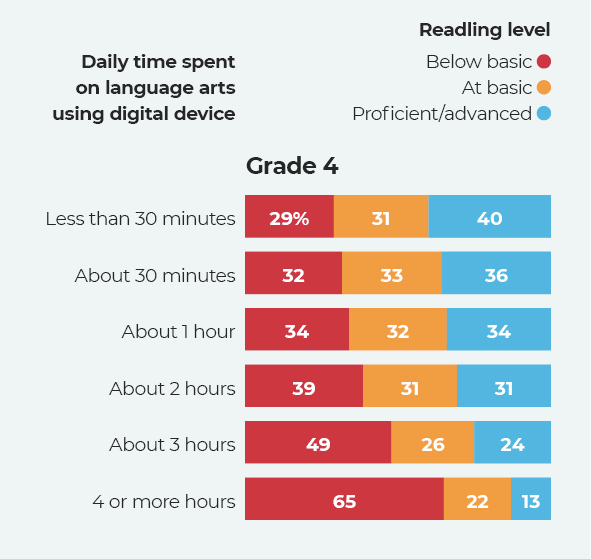American students have never had more access to digital devices for reading in and out of school. Now emerging research and troubling results on the test dubbed the Nation’s Report Card raise questions about what effect all this digital access could have on students’ longterm reading skills.
A little more than 1 in 3 American students read proficiently in grades 4 or 8, according to the 2019 National Assessment of Educational Progress, released at the end of last month. Reading scores in both grades declined significantly across states, races, and income levels, in public and private schools.
Students have actually lost ground since 2017 on both of the NAEP’s main reading content areas: literary experience, such as fiction analysis, and reading for information, such as finding evidence to support an argument. Both grades declined significantly in both areas from 2017 to 2019, but the drop was larger for literary skills. In fact, 8th graders perform worse now than they did in 2009 in literary experience.
The results have spurred a flurry of questions about what could drive such a broad-based drop. The 2019 administration marks the second time most students have taken a digital version of the NAEP itself, but Peggy Carr, the associate commissioner for the National Center for Education Statistics, which administers the NAEP, said the neither the testing mode nor changing demographics explain the drop in performance.
“I really think it’s important to just take a look at that and say, well, maybe it’s more something in the culture rather than specific policies,” said Nat Malkus, the deputy director of education policy studies at the American Enterprise Institute, noting that states’ demographic and policy changes in education do not explain the widescale declines.




